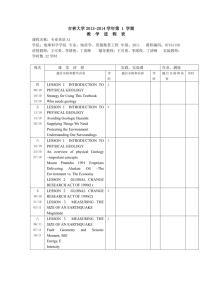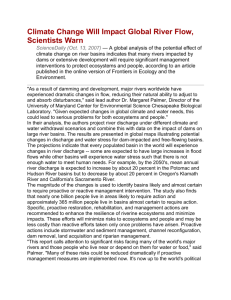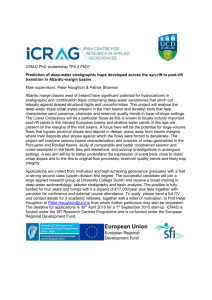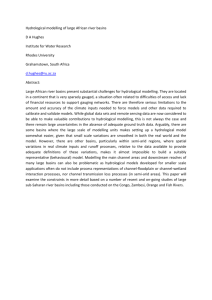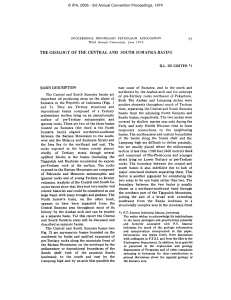ABSTRACT THESIS: STUDENT: DEGREE:
advertisement
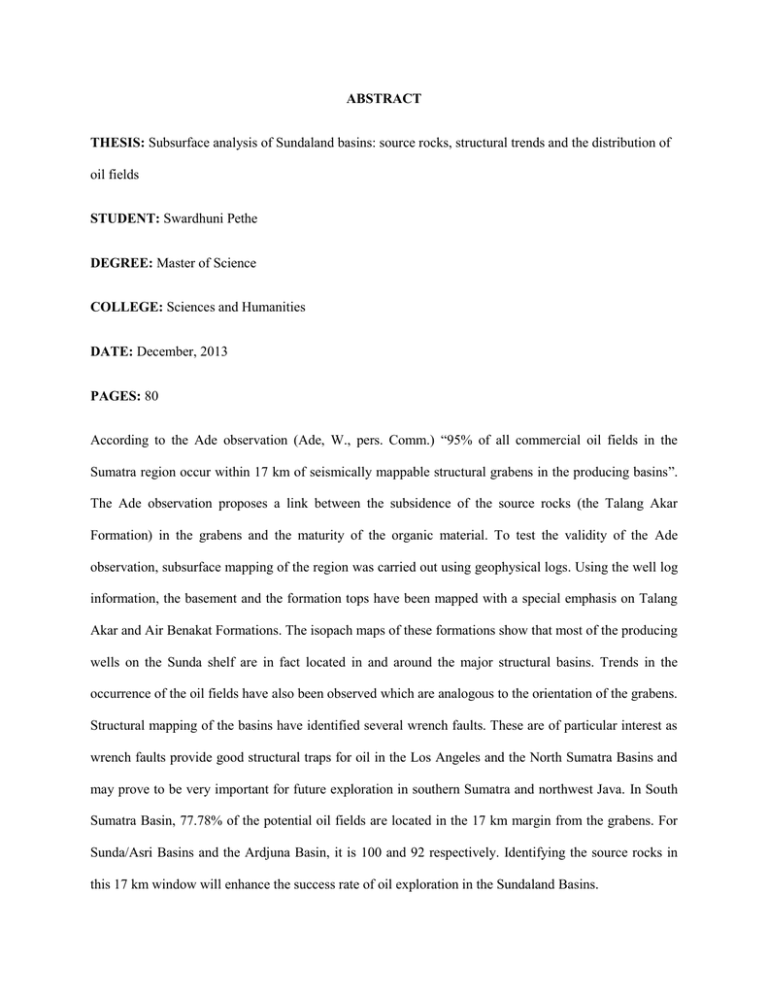
ABSTRACT THESIS: Subsurface analysis of Sundaland basins: source rocks, structural trends and the distribution of oil fields STUDENT: Swardhuni Pethe DEGREE: Master of Science COLLEGE: Sciences and Humanities DATE: December, 2013 PAGES: 80 According to the Ade observation (Ade, W., pers. Comm.) “95% of all commercial oil fields in the Sumatra region occur within 17 km of seismically mappable structural grabens in the producing basins”. The Ade observation proposes a link between the subsidence of the source rocks (the Talang Akar Formation) in the grabens and the maturity of the organic material. To test the validity of the Ade observation, subsurface mapping of the region was carried out using geophysical logs. Using the well log information, the basement and the formation tops have been mapped with a special emphasis on Talang Akar and Air Benakat Formations. The isopach maps of these formations show that most of the producing wells on the Sunda shelf are in fact located in and around the major structural basins. Trends in the occurrence of the oil fields have also been observed which are analogous to the orientation of the grabens. Structural mapping of the basins have identified several wrench faults. These are of particular interest as wrench faults provide good structural traps for oil in the Los Angeles and the North Sumatra Basins and may prove to be very important for future exploration in southern Sumatra and northwest Java. In South Sumatra Basin, 77.78% of the potential oil fields are located in the 17 km margin from the grabens. For Sunda/Asri Basins and the Ardjuna Basin, it is 100 and 92 respectively. Identifying the source rocks in this 17 km window will enhance the success rate of oil exploration in the Sundaland Basins.

